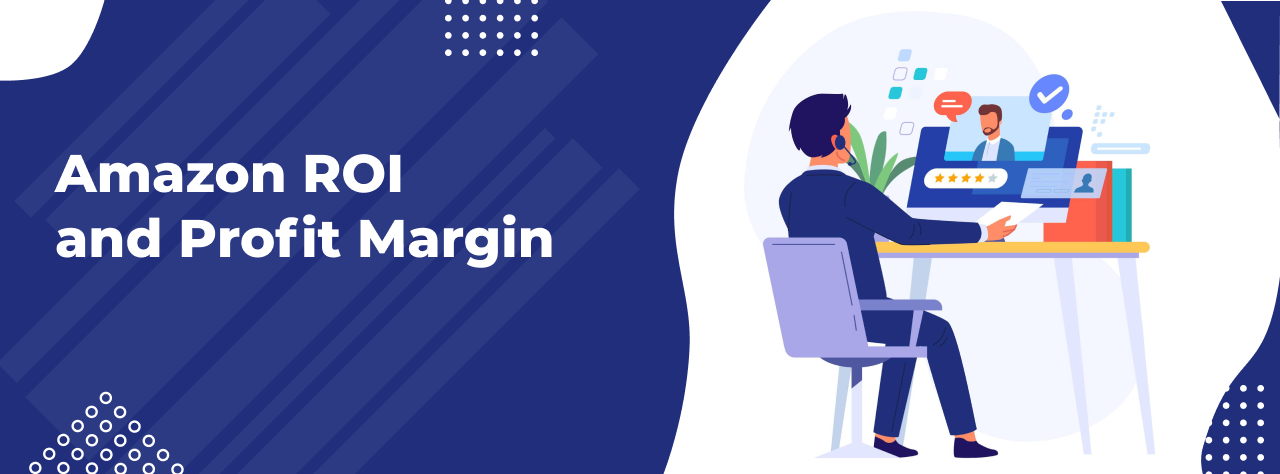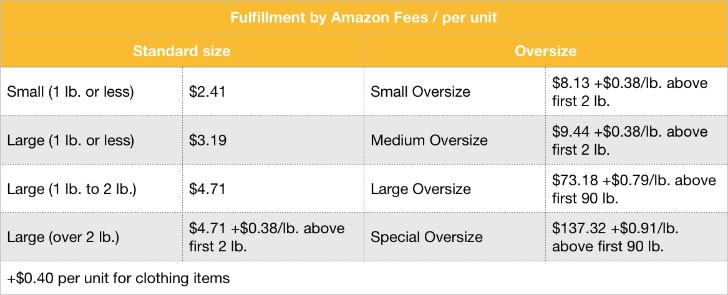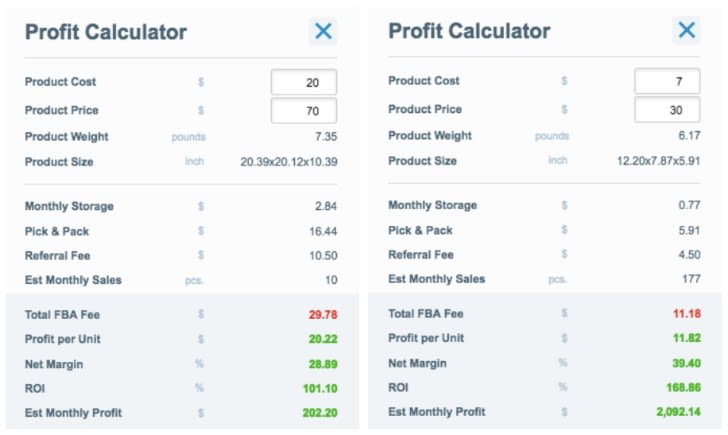
Amazon Profit Margin and ROI: How to Calculate
Wondering how to calculate Amazon seller fees; or, how to count your profit? Having an insight into these matters is absolutely crucial for any Amazon seller. Amazon revenue calculator includes many indicators that help you to estimate your profit. Among them are such indicators as
How do you analyze them? How do you decide whether to sell certain product or not? This article and our video will help you to understand that.
Amazon Fees for Sellers
Every Amazon seller has to pay fees for its services. They are reasonable because Amazon is a great marketplace and it provides the exceptional service! So, how are Amazon fees calculated? They include:
✔ Amazon FBA Fulfillment Fees
If you want Amazon to process the customers’ orders you have to pay fulfillment fees. They include picking and packing of orders, shipping and handling, customer service and product returns. These fees depend on the size and weight of the item.
Presently the fees structure changes depending on the season. After February 22, 2018, it will no longer have a separate rate for October through December. The dimensional weight calculation will also change.
AMZScout tools include an Amazon shipping cost calculator, so you can check FBA fees for any product quickly.
✔ Monthly Inventory Storage
As an individual FBA seller, you have to pay a monthly storage fee. This fee is charged for all units stored in Amazon fulfillment center based on the calendar month and daily average volume. It is calculated depending on the size of the inventory and the season. Storage fees are naturally higher in the 4th quarter (from October to December).
If a product is stored for 6 months or more, a seller might be charged a long-term storage fee. This fee depends on the size of the affected inventory and relatively high- $11.25 per cubic foot for inventory stored for 6-12 months and $22.50 per cubic foot for inventory stored for more than 12 months. Which is why most sellers try to plan their inventory to have their stock sold within 4-5 months.
✔ Referral Fee
Whether you ship yourself or not, you have to pay referral fee for each item sold. Referral fees vary by category. Some categories have a per-item minimum referral fee. This fee is 15% of the price for the most of categories. Detailed information about these fees you can find on the page “Selling on Amazon Fee Schedule” at Amazon Seller Central.
✔ Per-item Fee
If you are an individual seller, Amazon will charge $0.99 for each item sold regardless of a product category.
You don’t have to calculate any of such fees manually or wonder, “Why are my fees are so high?” afterward. You can find FBA price using our Amazon selling fee calculator.
✔ Other Possible Amazon Fees:
Labeling fee
All the products you ship to Amazon must have a barcode, otherwise you will be charged $0.20 for each unit.
FBA Prep Service & FBA Unplanned Prep Service
As with labeling, Amazon has a set of strict packaging and prep rules. If you fail to prepare your products properly you will be charged.
Returns processing
In case if a returned product needs repackaging for resale, Amazon will charge a repackaging fee.
Variable closing fees
This type of fees is applied only to media products.
Stock removal fee
If you decide to remove the unsold stock from Amazon, you will be charged a removal fee.
You don’t have to calculate these fees are worry if they are incorrect, or wonder, “Why are my fees are so high?” afterward. You can find FBA price using our Amazon selling fee calculator.


Return on Investment (ROI)
Amazon ROI (Return on Investment) - an indicator of profitability of a transaction in relation to an investment. For example, if ROI is 55%, that means that we earn 55% of the investment. In other words, from each $100 we receive $55 net.
Return on investment (ROI) generally means the benefit to an investor resulting from an investment of some kind. Particularly for Amazon sellers, it means the net profit to the product cost expressed in a percentage.
ROI = Net profit / Product cost * 100%
AMZScout tools for Amazon sellers calculate ROI quickly and easily.
A simple example for you to understand the meaning of ROI.
You buy 10 pieces of product (for example, some sculptures for interior design) and ship them to Amazon. The cost of each item including shipping to Amazon fulfillment center is $20. Your investment, or product cost for you, is $200. Amazon sells these statues for $70 each. Amazon commission for each item sold is about $30.
After you sell all the statues you will get $400 from Amazon. Your net profit will be $200. The ROI will be 100%. It means you’ll get your investments ($200) and receive 100% profit ($200).
What can you do with this profit? You can enjoy it or… invest it! Buy two times more sculptures to double your sales next month: if there is sufficient demand, of course.
A good ROI is considered to be 100% and above! An ROI of 100% allows you to double your revenue. Though, ROI of 50% is also considered to be sufficient for a stable growth. With such return on investment, you will double your revenue in 2 months.
The ROI you might personally find acceptable depends on many factors and your long term strategies. For example you might be comfortable with an ROI of 10% for a period if it means that you will eventually have a greater share of the market, or higher rankings etc…
Net Margin
Amazon profit margin - the profitability of a deal in relation to revenue. For example, we are going to sell a product for $100 with a profit margin of 25%. This means that we receive $25 from each $100 of income.
Net Margin = Net profit / Price * 100%
Amazon gross margin - net sales revenue minus the cost of goods sold. This shows the income you have after deducting expenses connected with manufacturing or providing a service.
It is difficult to say what net margin is ideal. It should be higher for a small business. A net profit of 5% can be a great achievement for a big business since it’s 5% out of a large sum of money.
Either way, you should always consider the net margin along with the sales volume to have a better insight into your Amazon business so you can make adjustments that benefit your long term strategy.
Let’s say that you have some products in mind and you would like to see if you should launch some, or any of them. How can you compare a few totally different products? Which product should you launch on Amazon?
Here’s a simple example that illustrates why the net margin is so important:
Let’s imagine you have two different products.
The price of the first product (sculptures) is $70. It yields a net profit of $20 per unit. The second product is a designer mug. It is cheaper ($30) and yields a lower net profit (approximately $11 per unit). At this point It may seem that the first product is the better choice, that is until we calculate the net margin.
The net margin of the sculptures is 28% and the net margin of the cups is 39%, in other words the cup is a more profitable product. Additionally, the sales of cups are higher, meaning they can potentially yield a greater monthly profit in comparison to the sculptures.









